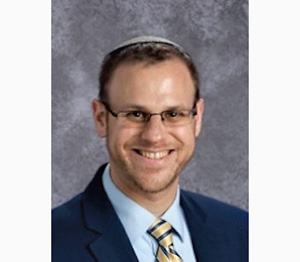
Last week, together with three colleagues at the Rae Kushner Yeshiva High School, I joined a cohort of some 40 educators at a unique Teacher Maker Institute for Educational Technology based in Palo Alto, California. While the conference was dedicated to learning cutting-edge pedagogic approaches from top-flight educational thought-leaders, it was an incident on Tuesday morning that made the greatest impression on me, particularly during the days leading up to Tisha B’Av.
We sat in Maker Ed, a San Francisco-based institute at the forefront of the “Maker Movement,” an educational approach maintaining that students learn best when they are engaged in design thinking. After dividing into random four-person groups, we participated in a thinking routine titled Parts, Purposes, Complexity, in which we were charged to choose a physical item and identify its component parts, each part’s purpose and the complexities governing the interrelationships between the object’s components.
Our group chose a doorknob and set out to work. After first examining the knob from literally dozens of angles, it quickly dawned on us that in order to construct a proper understanding of how the doorknob works, we first needed to break it apart. Only after prying loose the component parts, from the screws to the bolt to the strike plate, did we begin to appreciate the intricacies involved in designing a doorknob. In other words, as one colleague tweeted, it was the perfect illustration of “deconstruction as a process for constructing knowledge.”
And then it struck me: Deconstruction is a perfect metaphor at this time of year. During the Nine Days we mourn the Churban. Yet, just as Rabbi Akiva laughed upon witnessing a jackal emerge from the former site of the Holy of Holies, when properly harnessed, destruction carries the potential to be a harbinger of redemption. Sometimes we must fail, or break things apart, in order to take the next step forward.
But there is an even deeper point. The classic rabbinic term for “destroy” is listor. Thus, the melacha of destroying on Shabbat is called soter. Yet a close examination of this phrase’s biblical root reveals a different meaning. For instance, the familiar verse reads “Yoshev be-seter elyon,” “He who sits in the hidden place on high” (Tehillim 91:1). Indeed, in every one of its 35 appearances in Tanach, the very same shoresh refers not to destruction but to hiding, the word’s original meaning. Satar was then borrowed in rabbinic literature to refer to destruction.
This suggestion, that in Jewish thought destruction may more accurately be thought of as hiding, offers an inspiring perspective. In terms of education, “maker” or otherwise, the metaphor suggests that no child is broken. Instead, it is our sacred responsibility as parents and educators to empower our children to find the hidden spark within.
As individuals and members of the Jewish community, with Tisha B’Av upon us and the month of Elul fast approaching, we similarly recall that the Divine presence has not entirely disappeared but has somehow become obscured or hidden. Instead, if we take a constructive approach, our personal and national shortcomings can be spurs to even greater spiritual futures. As the Torah suggested long before the Maker Movement, when things come apart, if we search deeply enough we can ultimately construct an even brighter future for ourselves, our children and our people.
By Rabbi Tzvi Sinensky
Rabbi Tzvi Sinensky is the incoming director of interdisciplinary learning and educational outreach at the Rae Kushner Yeshiva High School in Livingston, New Jersey. He also serves as an editor for the popular Lehrhaus Jewish thought website.










